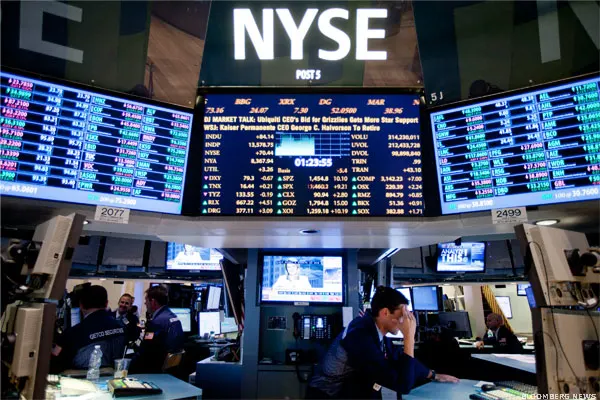In a dramatic turn of events, Wall Street faced a significant downturn as it entered the triple witching hour, a quarterly financial phenomenon that often leads to increased volatility. This period marks the simultaneous expiration of stock options, stock index futures, and stock index option contracts, which can trigger wide-ranging impacts on stock prices due to the realignment of positions by institutional investors.
Market Turmoil: Stocks Tumble into Triple Witching
As the clock ticked down to the close of the triple witching hour, markets showcased a heightened level of turbulence. Major indexes, which had been performing robustly, saw a sharp decline, erasing previous gains. The Dow Jones Industrial Average, for instance, plunged by over 300 points in a single trading session, highlighting the nervousness pervading the trading floors. Analysts pointed to the large-scale unwinding of positions, particularly in the tech and financial sectors, as primary drivers behind the downturn.
The impact was not just limited to the U.S. markets. Global stocks also felt the ripple effects, with European and Asian markets closing lower as they reacted to the shifts in American markets. The interconnected nature of modern global economies means that what happens in one market can often influence others, and the triple witching hour proved to be a catalyst for a worldwide market reevaluation. This period also coincided with other economic uncertainties, further compounding the market’s volatile behavior.
Market experts suggest that the sell-off was exacerbated by algorithmic trading systems, which are programmed to act on certain market conditions and can accelerate the movement of stock prices. As these systems detected the increased volatility and heavy trading volume, sell orders multiplied, leading to a faster drop in stock prices. This automated trading, while efficient, is also blamed for deepening the market corrections during such high-stress periods, demonstrating the double-edged nature of technological advancements in trading.
Investors Brace as Triple Witching Hour Strikes
Investors, both retail and institutional, braced for impact as the triple witching hour approached. Many adjusted their portfolios in anticipation of the event, seeking to hedge against anticipated losses or capitalize on potential opportunities. Financial advisors reported a surge in inquiries from clients worried about the potential impacts on their investments, indicating widespread concern over the market’s trajectory during these periods of contract expirations.
The heightened market activity typically associated with triple witching also leads to an increase in trading volumes. Exchanges across the board reported significant spikes in activity as traders rushed to close or renew their positions. This surge, while expected, still posed challenges for traders trying to execute large volumes of trades quickly and at desirable prices. The liquidity, although high, was erratic, causing price discrepancies that could be both a boon and a bane for different market players.
As the dust settled post-triple witching, the immediate focus shifted towards analyzing the aftermath. Market analysts began dissecting the movements to understand better the underlying causes and to predict future trends. Initial reports indicated a possible stabilization, but with a note of caution about potential aftershocks. The consensus was clear: while the markets might recover, the specter of such volatility necessitates a more strategic approach to managing investments, especially during similarly tumultuous periods.
The triple witching hour remains a test of nerves and strategy for investors worldwide. Its latest occurrence has once again underscored the complexities of modern financial markets, where traditional trading intersects with sophisticated technology, impacting both individual and institutional investors. As the market navigates through these choppy waters, the lessons learned from this and past triple witching events will undoubtedly shape future trading strategies, emphasizing a blend of caution and opportunism.









